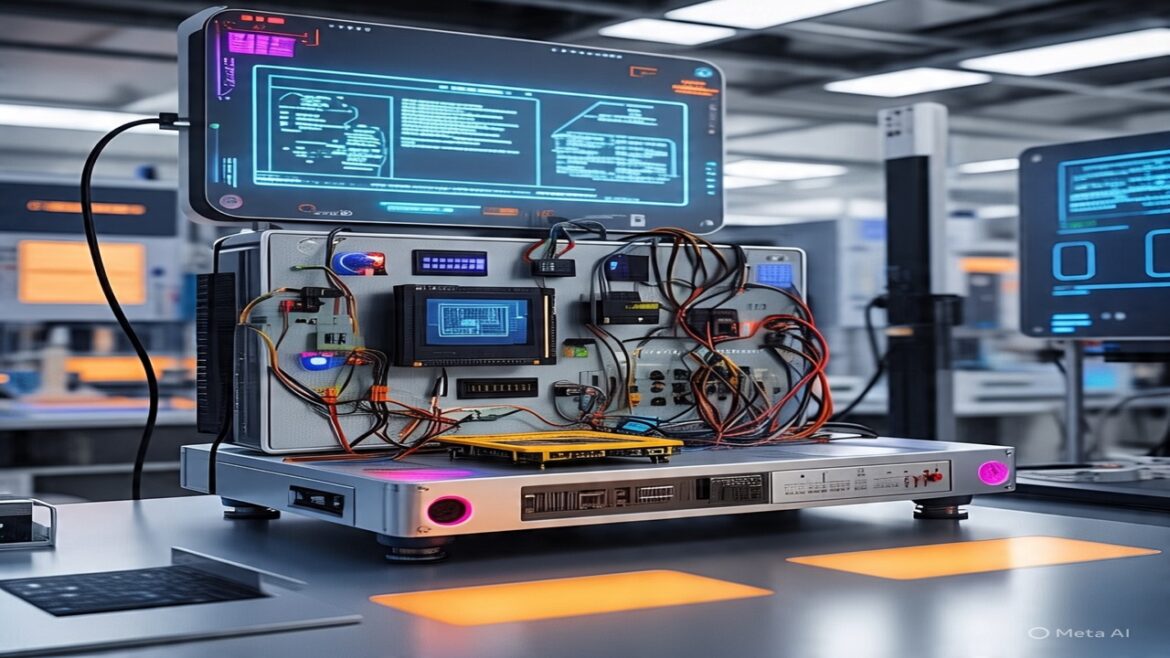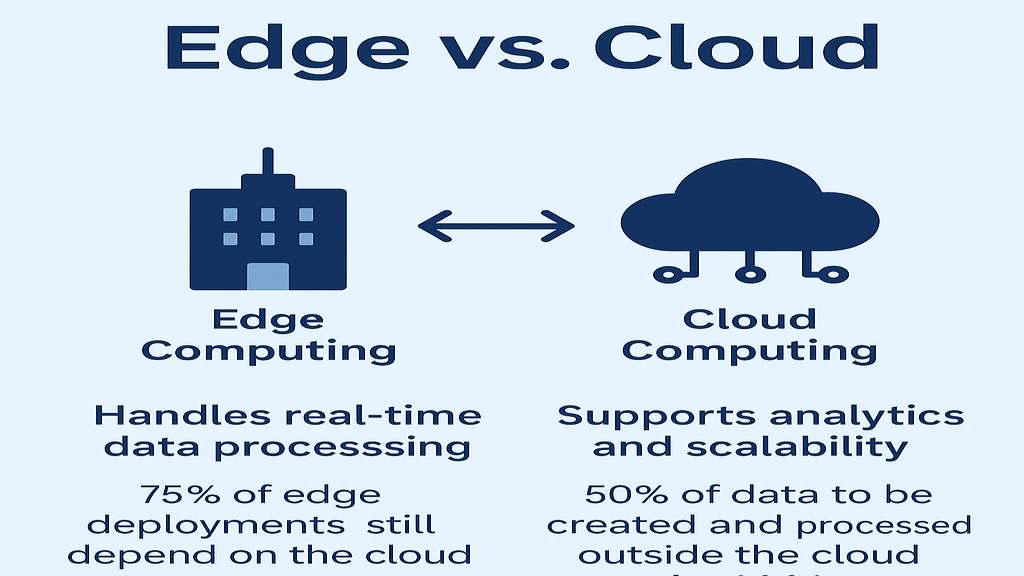Covered Contents
ToggleIntroduction
Unscheduled downtime in manufacturing environments may be as expensive as $260,000 per hour, depending on industry estimates. In spite of automation advancements, most factories continue to use conventional maintenance practices that are either reactive or planned, irrespective of the condition of the machines. Such methods tend to lead to over-servicing or catastrophic failure. Edge AI kits are a game-changer because they make predictive maintenance possible. Through real-time and local processing of machine data, they minimize cloud infrastructure reliance and offer actionable insights to avert breakages, reduce operational downtime, and maximize asset utilization.
What Is an Edge AI Kit?
An Edge AI Kit is an incredibly small, rugged solution that would introduce machine learning and data processing into the factory floor. It will take high-performance edge computing hardware, industrial sensors, and AI software. Then put them together to monitor the health of key machinery. Standard components are high-performance processors such as the NVIDIA Jetson Orin or Intel® Core™ i9, robust sensors to capture vibration, heat, and current, and software packages like TensorRT or OpenVINO. All these kits are contained in industrial-grade enclosures and have connectivity options such as 5G, Wi-Fi 6, and Ethernet to integrate well with factory networks.
What Problem Does It Solve?
Factories experience various challenges in keeping equipment running—unplanned breakdowns, inefficiency caused by over-maintenance, and limited visibility into machine health. Edge AI kits target these problems directly. Through ongoing analysis of equipment data at the edge, these kits identify early indicators of mechanical failure, minimize downtime, and obviate the need for manual diagnostics. In addition, they reduce data transfer to the cloud, which saves bandwidth, reduces operating expenses, and protects data privacy. It produces a more intelligent, efficient, and secure factory environment.
Key Components of an Edge AI Kit
➤ Each Edge AI Kit contains key components that combine to support predictive maintenance:
➤ Compute Unit: Supplies the processing capability required for AI inference on the factory floor. Standard examples are Jetson Orin NX and Intel® Core™ i9 processors.
➤ Sensors: Capture real-time information from equipment. These can range from vibration, current, temperature, and acoustic sensors.
➤ AI Frameworks: Enable deployment of pre-trained machine learning models. Well-known examples are TensorRT and OpenVINO.
➤ Operating System: Edge-optimized platforms such as Yocto and Ubuntu Core facilitate stability and security in industrial deployment.
➤ Security Features: Inbuilt security features like TPM 2.0 and Secure Boot preserve system integrity and restrict unauthorized use.
How Edge AI Enables Predictive Maintenance
Real-Time Processing
Edge AI systems process sensor information in milliseconds, making it possible to detect faults. This enables failures to be averted before they become expensive.
Localized Inference
Instead of uploading all data to the cloud, Edge AI models infer data locally. It not only reduces response time but also makes critical systems operational even without the internet.
24/7 Monitoring
These systems provide around-the-clock surveillance of assets, ensuring that any deviation from normal behavior is quickly flagged. This continuous insight supports uninterrupted production and strategic maintenance planning.
Comparison with Cloud-Based Models
Edge AI systems significantly outperform cloud-based alternatives when it comes to latency, bandwidth efficiency, and data control. With response times under 10 milliseconds, they are ideal for time-sensitive operations. Unlike cloud models that require constant data uploads, Edge AI conserves bandwidth and keeps sensitive data on-premise, thereby enhancing security and compliance.
|
Feature |
Edge AI |
Cloud Systems |
|
Latency |
<10 ms |
>100 ms |
|
Bandwidth Use |
Minimal |
High |
|
Real-Time Analysis |
Yes |
Delayed |
|
Data Sovereignty |
Local |
Cloud-dependent |
|
Reliability |
High |
Dependent on connections |
Real-World Applications
Automotive Factory in Germany
A car parts distributor used Jetson-driven Edge AI Kits to track robotic welding arms. The system forecast arm wear nine days before it happened, enabling preventive maintenance and saving around €400,000 in unexpected downtime.
Textile Manufacturing in India
In a large textile plant, Intel Atom-based edge devices monitored motor temperature in weaving machines. A 70% reduction in maintenance dispatches and high machine uptime were achieved through prompt interventions.
Mining Operations in North America
An industrial company used Lanner rugged edge computers operating EdgeX Foundry software to monitor heavy gearboxes in rugged environments. The solution prevented failures that could have caused over $1.2 million worth of losses by initiating early maintenance activities.
Integration with Existing Systems
Modern Edge AI Kits are engineered to integrate natively with current industrial infrastructure. They provide out-of-the-box support for PLCs and SCADA systems and are compatible with industry-standard protocols. Secure APIs provide access to the cloud, while containerized deployment with Docker or Kubernetes enables modular and scalable integration. Plug-and-play multi-sensor capability simplifies expansion and customization.
How to Choose the Right Edge AI Kit
When choosing an Edge AI Kit, the following characteristics need to be evaluated to guarantee optimal performance:
AI Processing Performance: Check for equipment with high TOPS (trillions of operations per second) ratings.
Sensor Support: Verify the system is compatible with all industrial sensors needed.
Environmental Robustness: Check the device’s level of resistance to shock, vibration, and temperature fluctuations.
Update Availability: Verify that the seller offers regular firmware and model updates.
Software Ecosystem: Select kits that are compatible with popularly used frameworks such as PyTorch, TensorFlow Lite, and ONNX.
Security Considerations
Built-In Protections
Security is also high on the agenda in industrial settings. Edge AI Kits feature hardware safeguards such as TPM 2.0 and Secure Boot to protect against tampering. Model encryption and role-based access control (RBAC) secure intellectual property and restrict access to key functions. As Mission Critical Magazine points out, a compromised edge node can put the entire factory floor at risk, so effective security is crucial.
Future of Predictive Maintenance
The development of predictive maintenance is set to gain pace with some game-changing trends:
Digital Twins: Interoperability with edge-based digital twins provides real-time visualization and simulation of equipment performance.
Prescriptive Analytics: AI systems will go beyond forecasting failures to suggesting specific steps to avoid them.
Federated Learning: AI model training distributed among edge nodes will allow models to learn together without ever sharing raw data.
As per EdgeIR, over 65% of smart factories will implement autonomous, self-healing maintenance systems based on edge intelligence by 2027.
Conclusion
Edge AI kits are a strategic step forward for industrial maintenance. By facilitating predictive analytics right on the factory floor, the systems lower operational expenses. Increase asset longevity and provide for uninterrupted production. With industrial environments becoming ever more complicated, implementing Edge AI predictive maintenance is not only a technological edge—it’s a competitive imperative.


